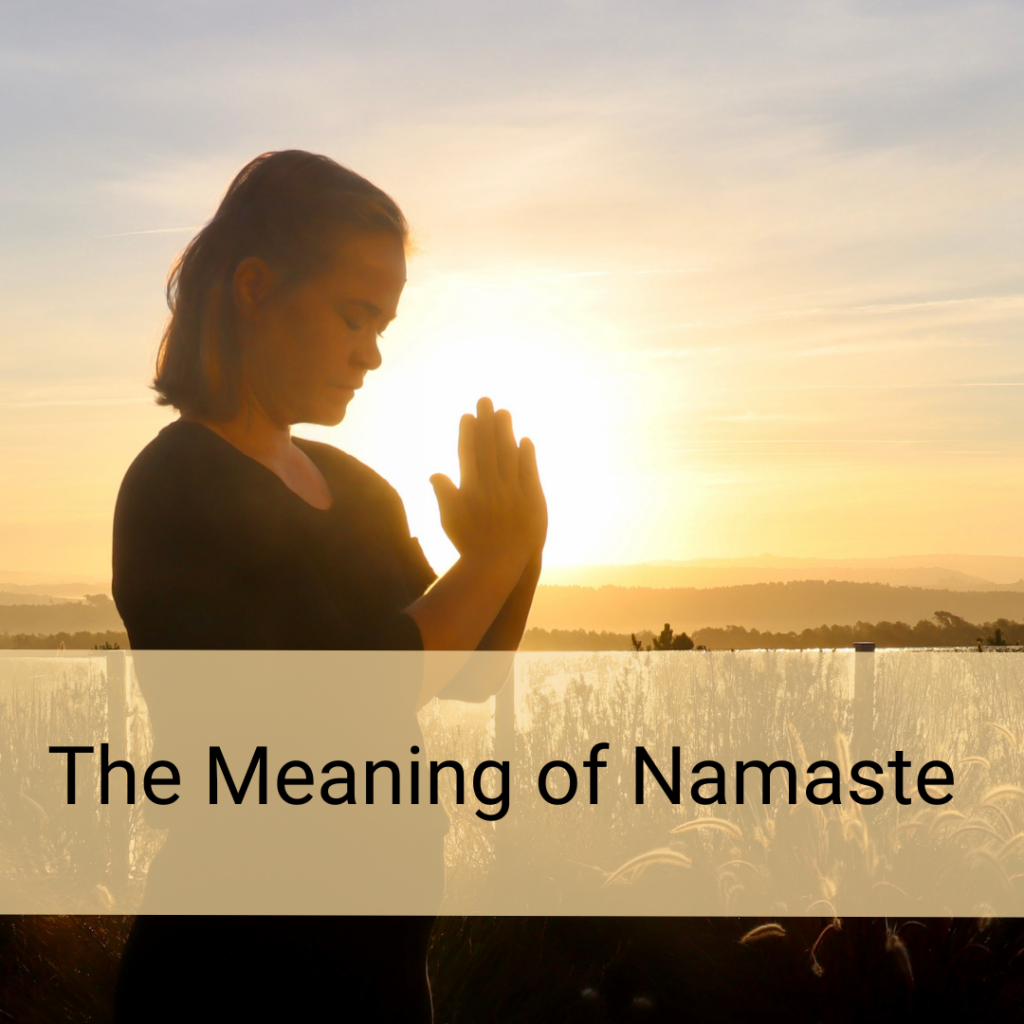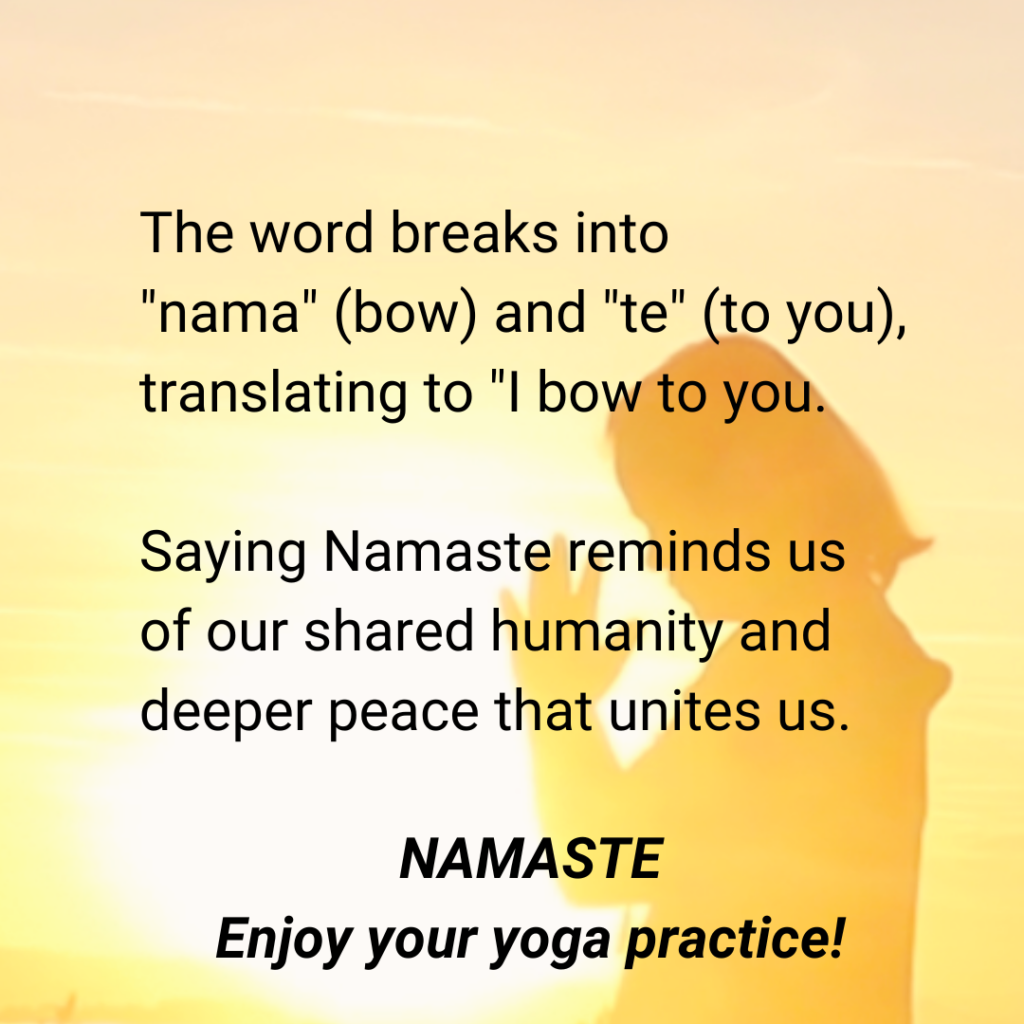The word Namaste is often accompanied by a slight bow with hands pressed together at the heart, a gesture called Anjali Mudra. So hands together is a gesture wich is widely recognized as a way of saying Thank you.
But Namaste is more than that. In Hinduism, Buddhism, and various Eastern cultures, it’s a gesture of respect, humility, and acknowledgment of the divine essence within each individual.
The word itself can be broken into “nama,” meaning “bow,” and “te,” meaning “to you.” Together, Namaste translates as “I bow to you,” symbolizing a recognition of the shared divinity and universal oneness.
Namaste reflects a view of equality and respect, emphasizing that all beings share an inner light. It can also represent gratitude, love, and a reverence for life.
In our Western cultures, “Namaste” is commonly heard in yoga and meditation spaces. I end each yoga class with this word as well. Its meaning is often interpreted as “the divine in me honors the divine in you,” making it an inclusive and soulful way to end the practice.
By saying Namaste, we are reminded of the humanity that binds us and the deeper peace that unites us all.



